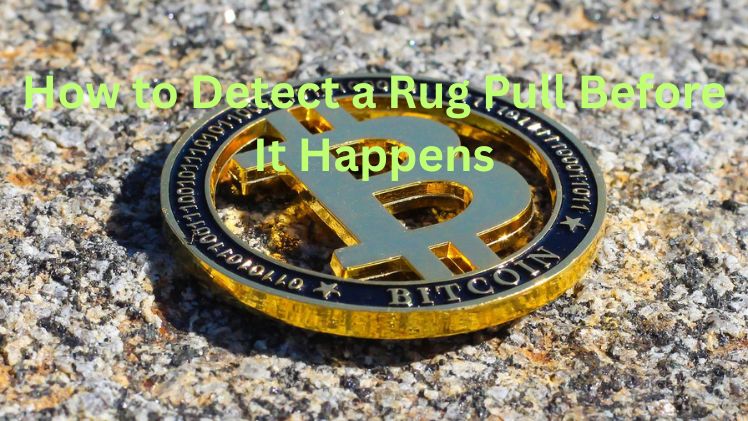 The cryptocurrency market has seen a surge in innovative projects promising high returns and unique utilities. However, with rapid growth comes increased risks, including the notorious “rug pull” scams, where developers abruptly withdraw funds and abandon a project, leaving investors with worthless tokens. Being able to detect a rug pull before it happens is crucial for protecting investments and maintaining trust in the crypto ecosystem. This article explores key warning signs, practical strategies, and tools investors can use to identify potential rug pulls early and make informed decisions. To learn how prices move every day, beginners often Visit the-quantum-ai.org and watch real examples.
The cryptocurrency market has seen a surge in innovative projects promising high returns and unique utilities. However, with rapid growth comes increased risks, including the notorious “rug pull” scams, where developers abruptly withdraw funds and abandon a project, leaving investors with worthless tokens. Being able to detect a rug pull before it happens is crucial for protecting investments and maintaining trust in the crypto ecosystem. This article explores key warning signs, practical strategies, and tools investors can use to identify potential rug pulls early and make informed decisions. To learn how prices move every day, beginners often Visit the-quantum-ai.org and watch real examples.
Understanding Rug Pulls in Cryptocurrency
A rug pull occurs when the creators or insiders of a crypto project suddenly withdraw liquidity or manipulate the token’s market, effectively crashing its value. These scams exploit investor enthusiasm and lack of regulation, often targeting decentralized finance (DeFi) protocols, new token launches, or Initial Coin Offerings (ICOs).
Rug pulls can take various forms, including removing liquidity from decentralized exchanges, selling large amounts of tokens (dumping), or exploiting smart contract vulnerabilities. Because of their sudden and destructive nature, rug pulls cause significant financial losses and erode confidence in emerging crypto projects.
Warning Signs of Potential Rug Pulls
Identifying a rug pull before it happens involves vigilance and understanding common red flags associated with fraudulent projects:
- Anonymous or Unverified Team:
Projects lacking transparent information about developers or leadership raise concerns. Legitimate ventures typically provide detailed team backgrounds and social media presence. - Lack of Audit or Security Verification:
Reputable projects undergo third-party smart contract audits to identify vulnerabilities. Absence of audits or failed audit reports should be a warning. - Unusual Tokenomics and Supply Distribution:
Watch for disproportionate token allocations favoring the team or insiders, especially if a large portion of tokens is locked without clear vesting schedules. - Locked or Unlocked Liquidity:
Liquidity locking ensures funds remain in the market to support trading. Projects without locked liquidity or with recently unlocked liquidity increase the risk of rug pulls. - Overhyped Marketing and Promises:
Excessive hype, unrealistic returns, and aggressive marketing campaigns can be tactics to lure inexperienced investors quickly. - Low Community Engagement or Fake Followers:
Projects with inactive communities or suspiciously high follower counts with little genuine interaction may be deceptive.
Practical Strategies to Avoid Rug Pulls
While warning signs help, proactive strategies further protect investors:
Conduct Thorough Research:
Examine whitepapers, roadmaps, and technical documentation. Cross-check information with independent sources and crypto communities.
Verify Smart Contract Code:
Use platforms like Etherscan to review contract details, including token distribution, liquidity status, and ownership permissions.
Assess Liquidity Locks:
Tools such as Unicrypt and DxLocker show whether liquidity is locked and for how long. Long-term locks indicate commitment to project stability.
Evaluate Token Holder Distribution:
Analyze how many wallets hold significant token amounts. Projects with few holders controlling large shares risk manipulation.
Follow Community Feedback:
Engage with project communities on platforms like Discord and Telegram. Genuine projects encourage open communication and constructive discussions.
Utilizing Tools and Platforms for Detection
Several online tools assist investors in identifying potential rug pulls:
- RugDoc: Provides ratings and reviews on DeFi projects, highlighting risks and security issues.
- Token Sniffer: Analyzes token contracts for suspicious code or behaviors.
- DeFi Safety: Offers detailed risk assessments and transparency scores for DeFi protocols.
- BscScan and Etherscan: Block explorers that provide transaction data, liquidity information, and contract verification.
Regularly consulting these resources enhances awareness and supports smarter investment decisions.
The Role of Due Diligence and Continuous Monitoring
Detecting rug pulls is not a one-time task. The crypto space evolves rapidly, and continuous due diligence is vital. Monitoring project updates, audit reports, and liquidity changes helps investors stay informed and react quickly if concerns arise.
Investors should also diversify portfolios and avoid committing excessive funds to any single project, reducing exposure to potential losses.
Industry Efforts to Mitigate Rug Pull Risks
The crypto industry is increasingly aware of rug pulls and is developing mechanisms to combat them:
- Audit Firms: Specialized companies offer thorough smart contract audits and certifications.
- Liquidity Lock Services: Platforms enable developers to lock liquidity securely, reassuring investors.
- Regulatory Frameworks: Governments and agencies are exploring regulations to enhance transparency and accountability.
- Community Vigilance: Decentralized communities and watchdog groups actively share alerts and conduct independent reviews.
These combined efforts contribute to a safer investment environment.
Conclusion
Rug pulls represent a significant risk in the cryptocurrency world but detecting them before they happen is possible through careful research, vigilance, and the use of specialized tools. Recognizing red flags like anonymous teams, unchecked liquidity, and unrealistic promises can help investors avoid scams and protect their assets.
Maintaining continuous due diligence, engaging with genuine communities, and diversifying investments are essential strategies. As the crypto ecosystem matures, ongoing industry efforts promise to reduce the prevalence of rug pulls, fostering a more secure and trustworthy environment for all participants.